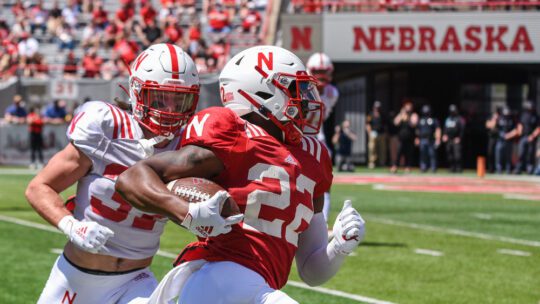
As summer winds down, college students return to school and so begins the rally cries and pep band revelry for collegiate athletics. And this year student-athletes have more on the line. As always, there are scholarships and professional league recruiting. In addition, it's the first full academic year that student-athletes have a chance to grow deep pockets through NIL (name image likeness) deals.
While NIL may seem more of a topic for advertising, marketing or legal, it’s important PR takes its seat at the table. When a student-athlete enters a NIL deal, he or she becomes a representative of that brand.
And as any college attendee knows, while academic life is full of innovation and spirit, it also includes temptations and the occasional bad decision—ones that now can be amplified tenfold through social media.
It’s time for communicators to sharpen their pencils, dust off the notebooks and pay close attention to NILs and how they can impact brands, organizations, clients and campaigns.
Where to Begin: Vetting
Alex Sinatra, CEO and founder of Your Potential for Everything, a strategic sports consulting business, is a former student-athlete. A lawyer and marketer, Sinatra urges that companies vet student-athletes before signing deals with them. As they should with any influencer, PR professionals should be involved to protect the company from risks a student-athlete may bring.
“While it's exciting to sign someone to become part of your brand, it's also something to do with caution,” she says. Fortunately, the internet is a treasure trove of information about student-athletes, who often begin competing at a young age.
“Reach out to high school coaches, read clippings online…and because this generation documents everything…look through social media and do a Google search.”
In addition to discovering problem areas, such as discipline, vetting also reveals much about a NIL candidate's character. This can include community service projects, if they were voted captain of their respective teams and the core values of those respective teams.
President at MikeWorldWide (MWW), Bret Werner, oversaw the launch of MWW's NIL practice, now one year old. In addition to researching coaches and other team members, vetting includes reaching out to schools' sports information directors (SIDs), he says.
“SIDs are going to understand not just which athletes are scoring on the field, but which can score with the media from an earned or social perspective,” Werner says.
He also suggests enlisting the help of a third-party platform for vetting as well as the negotiation and fulfillment stages of a partnership. Platforms like Opendorse list potential student-athlete partners in an organized fashion. It also includes student-athletes' social media reach.
Education for All Sides
While partnerships and spokespeople are nothing new, working with student-athletes opens up a new set of legalities. This is why stakeholders should be fully educated on NIL terms and conditions. Every state and school follows different rules on representation and intellectual property rights. Even taxes and payment are a consideration, especially if the student-athlete's work with a brand crosses state lines.
Communicators trying to navigate the NIL landscape should work with the NCAA Compliance department at the student-athlete's school, Sinatra suggests. In addition, some schools offer NIL workshops and courses for athletes.
As in any contract, close inspection of and communication about an agreement's responsibilities are advised. Andrea Nirsimloo, president, M&C Saatchi Sport & Entertainment North America, notes a thorough review with the student-athlete and brand representative can help avoid future risk and clear up misunderstandings.
“Confirm, as with any talent agreement, that clauses are included that protect the brand from any improper conduct,” Nirsimloo says. “Ensure that from a comms perspective you have clear guidelines, protocols and messaging prepared should an issue arise.”
Still…Crisis Can Happen
“Athletes at any level are, of course, human," Nirsimloo says. "And that means anything can happen and issues can arise. So, as with any communications campaign, being as prepared as possible [for issues] is the best approach.”
Werner says that old crisis binder on the shelf won’t cut it when an NIL issue arises. Instead, communicators need a modern-day playbook. An app with centralized information for the crisis PR team, he says, may be a better approach.
“What is the chain of command on decisions? Paralysis [in a NIL crisis] is worse [than in other crises],” he says. “Ultimately, the athlete represents the university. So, there is sort of a hierarchy of stakeholders that need to be involved in preparing.”
Media training can also help mitigate risk when working with a student-athlete.
“Give them some basic media training to explain how to talk to a media member. [Instruct] how to have an interview and how to ask, 'Is this on the record? Is this off the record?'” Sinatra says.
Werner says spending extra time training can make all the difference in the delivery of your campaign and the relationship with your representative.
“These are still college students, right? They are adapting to lots of different things,” he says. “They're incredibly busy people. They're studying, they're playing a sport. So, their time is limited. And schools do a good job of training them. But, I think that as an agency or brand, [reserve] time to prepare them to represent the brand in the right way…to ensure that they're ready to step onto the communication stage.”
Nicole Schuman is a senior editor for PRNEWS. Follow her: @buffalogal
